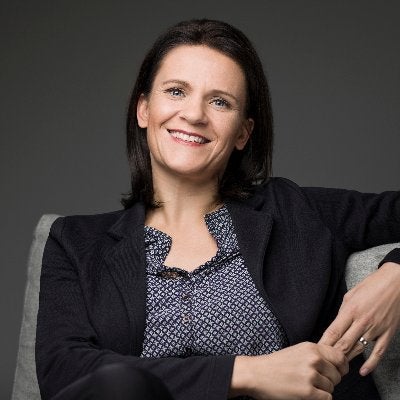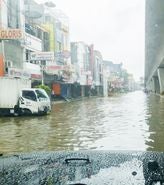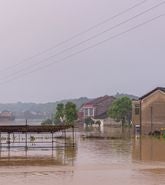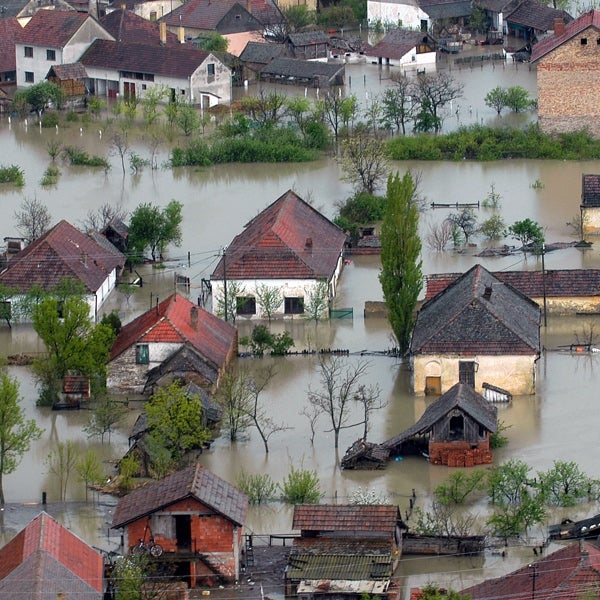As the world has witnessed, the recent catastrophic flooding, and resulting loss of life and damage across Germany, Belgium, and neighboring countries has again underlined the devastating nature of severe flood events, and as a risk modeling business, it reminds us of the need to understand all aspects of this peril.
What progress are we making on helping clients and wider stakeholders understand flood risk? RMS® has been modeling flood risk for over 20 years now, and this year represents one of our most important yet. After decades of sustained and significant investment in high-quality data, analytics, and technology, we now offer 100 percent global flood risk coverage through flood maps, and 80 percent of global written premium managed by risk models. Our flood risk analysis not only supports many business decisions, but it is also being used for a much broader spectrum of applications, from risk mitigation planning to climate change impact assessments.
We see the use of information that helps to increase the understanding of the risk as a central tenet for building an effective risk management strategy. The risk financing system, predominantly through insurance, has become more resilient due to the effective use of risk information based on catastrophe modeling. This resilience is demonstrated by reductions in reinsurance rate volatility over time. Risk is now seen as more manageable and predictable.
Looking back 10 years or so, catastrophic events such as Hurricanes Katrina and Sandy, the Thailand Floods, or the Tohoku and Christchurch Earthquakes reverberated strongly in the market. Now the market is thankfully not thrown by single extreme events, representing a significant shift from being largely event driven and moving toward a risk-driven business.
The Challenge of Broadening Flood Risk Coverage
Despite the wider availability of capital and the robustness of the natural catastrophe risk financing system, when it comes to flood risk, the insurance risk transfer mechanism is still only available to a select number of markets, often only to a selected segment of higher income groups or businesses, and/or is limited in its coverage. Understanding the root causes of this protection gap and the role insurance can play in closing it has been a key theme in the industry and for major industry think tanks such as the Geneva Association and the Insurance Development Forum.
It is broadly agreed that joining forces and working in partnership with wider stakeholders is where progress to close these protection gaps can be made. Flood insurance needs to be looked at less as a transaction and more as a product of risk management partnership. Sustainability and affordability of insurance products is strongly dependent on government efforts to invest in and facilitate risk-reduction and risk-prevention measures, whether this is new building codes, flood defense construction, or regulations for the financial market. Importantly, the future impact of climate change on flood risk needs to be factored into public-private risk mitigation strategies today.
What is exciting now is how risk modelers such as RMS are ready to play their part in addressing these challenges by providing the relevant risk analytics not only to insurers but to a range of stakeholders responsible for risk mitigation. Risk modeling advances – such as accommodating the full temporal and spatial nature of flooding from all sources, including the changes in hazard introduced through a changing climate, and equating this to potential loss costs – give all parties the insights they need to build flood resilience globally.
What Is the Season of Flood Series?
In our new RMS Season of Flood webinar series, we will share all of this deep expertise on flood risk. Plus, you’ll learn about the RMS perspective on key trends impacting the industry and the challenges that persist in mitigating flood risk globally.
I know that we have a clear role in closing the global flood protection gap. In our Season of Flood webinars, we will set out our thinking and demonstrate how advances in risk analytics can help the insurance industry and wider stakeholders, such as governments, deliver effective and sustainable solutions and tackle this pervasive, global threat.
Over the next few months, my colleagues and I will present a series of webinars focused on unravelling the complexity of managing flood risk. We’ll look at key drivers of flood risk and also how mitigation and public policy impacts management. Through our team of industry experts you’ll hear the latest perspectives on a wide spectrum of topics, including the role of the 100-year flood event for property flood risk management, the role antecedent conditions play in mega-floods, climate change, the power of mitigation, and how regional events can impact supply chains across an entire continent. Throughout the series, we will also show how new innovations within our newly launched flood products embody the latest science, data, and technology.
Please join us for fresh and practical insights. Explore all the webinars in the series and register your interest on the Season of Flood events page.







